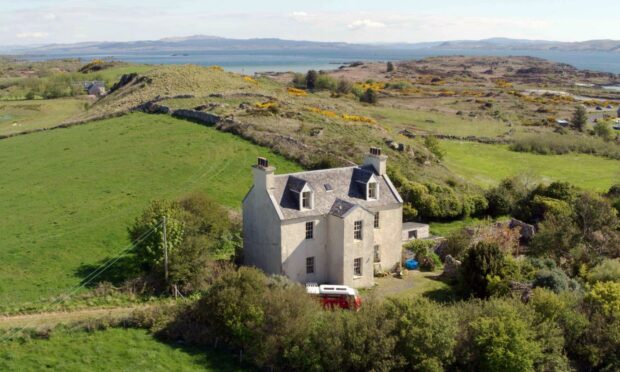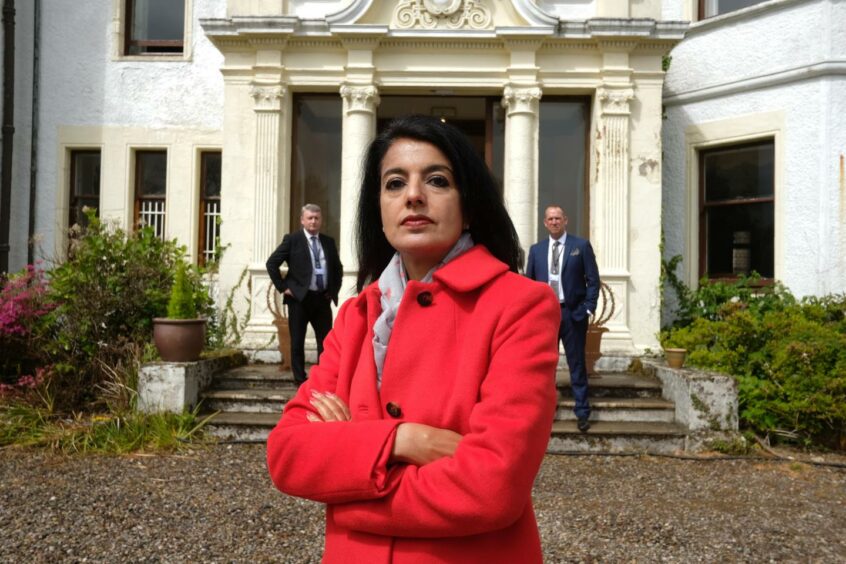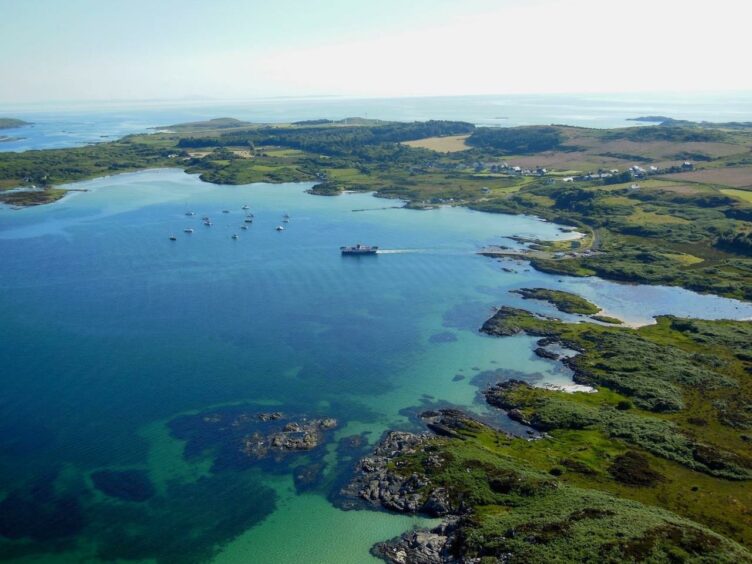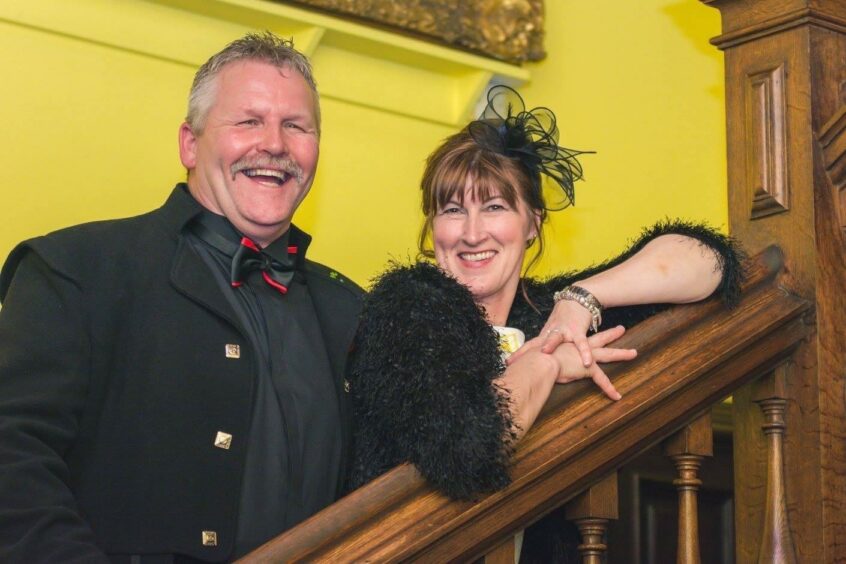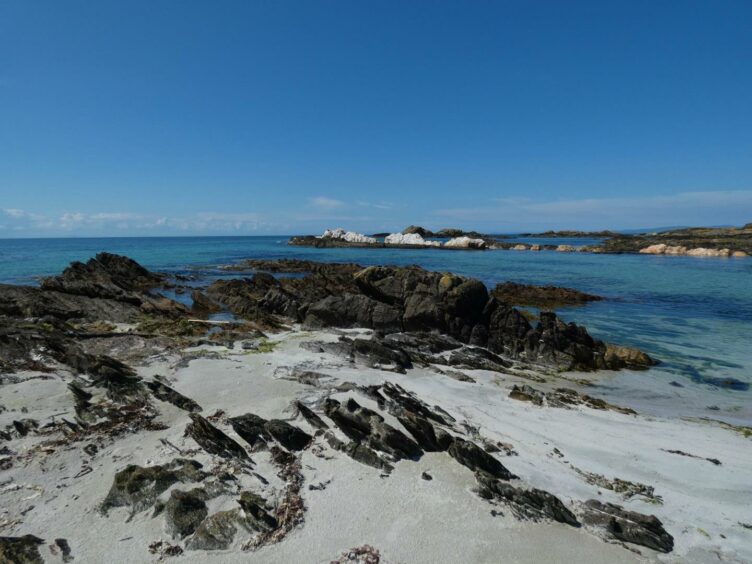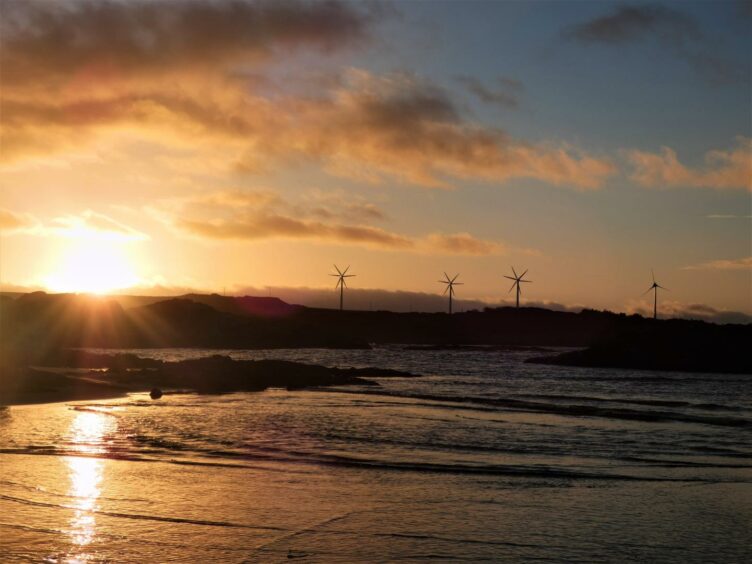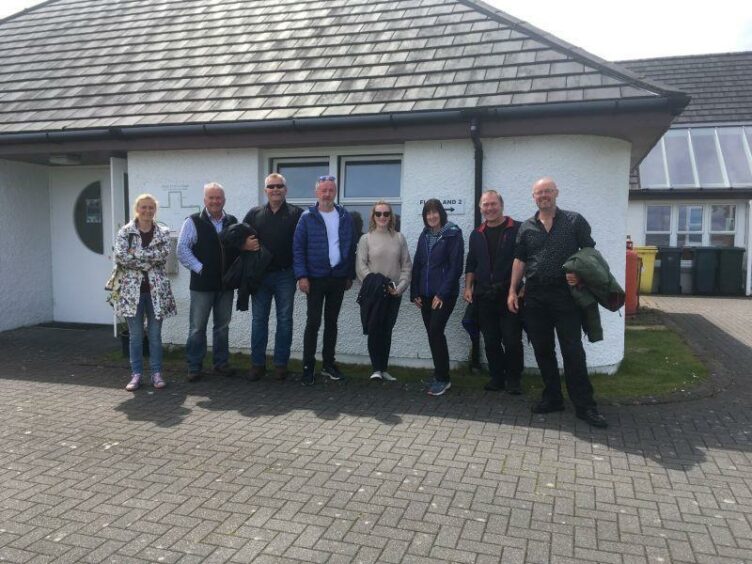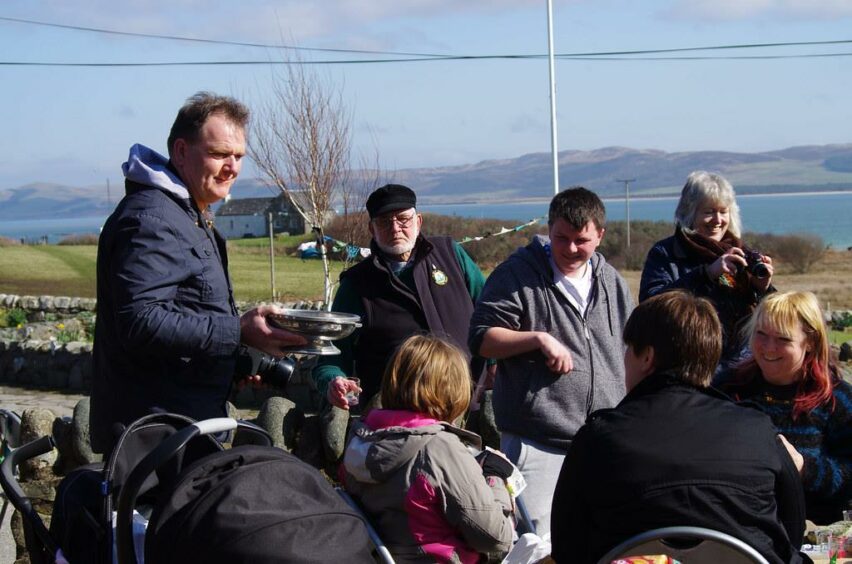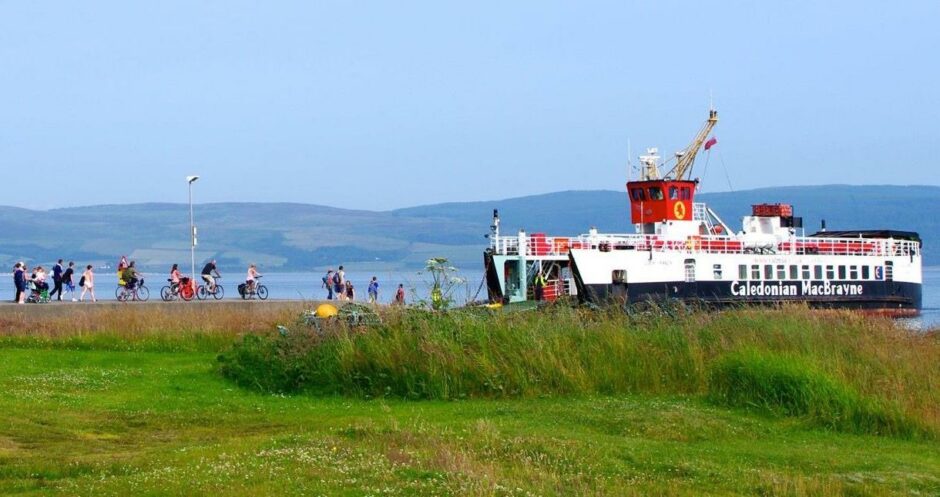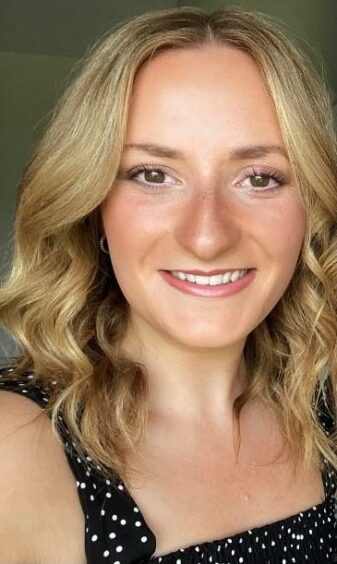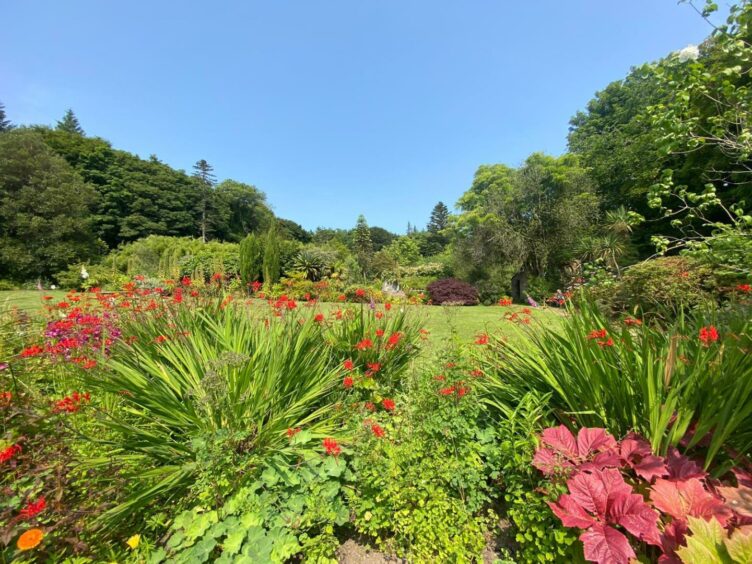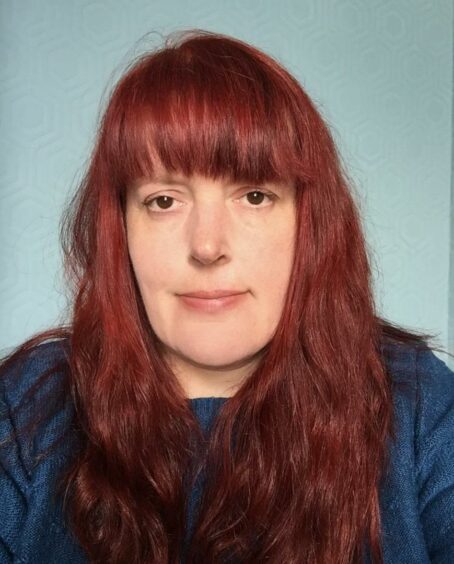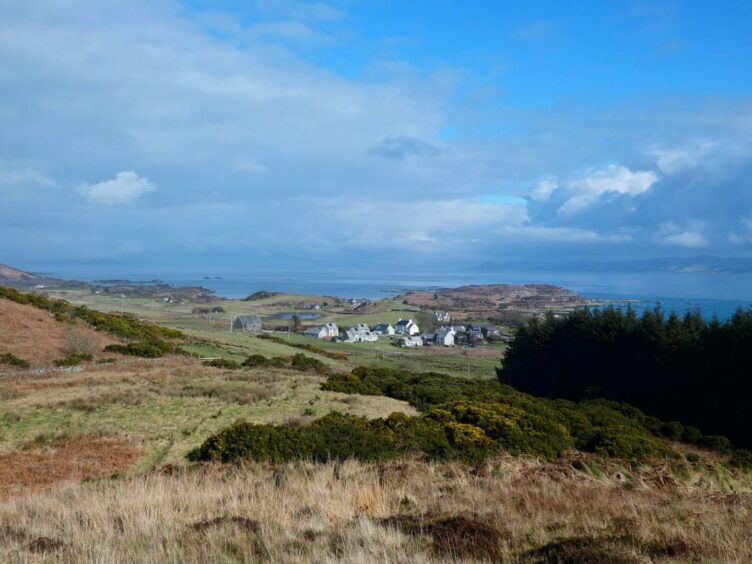Almost 20 years since the inhabitants of the Isle of Gigha took control of their own destiny with an ambitious buyout, it is in the spotlight again as the location for Channel 4 TV series Murder Island.
As the show’s amateur sleuths battle it out to solve the crime and bag the £50,000 prize, Jacqueline Wake Young talks to another remarkable group of people who took a gamble on themselves and won.
There’s been a murder on Hirsa – but on the Gigha island everything’s tickety-boo.
The residents are excited to see their beautiful isle thrust into the spotlight every Tuesday as the fictitious Hirsa in Murder Island, the Channel 4 reality show produced by STV Studios.
The six-part series sees would-be detectives try to solve a murder, penned by crime writer Ian Rankin, and was filmed on Gigha in the spring with everyone involved sworn to secrecy.
But this is just one of many landmark moments for the Inner Hebridean island, which has gone from strength to strength since the 2002 buyout, increasing its population, school roll, housing options and business opportunities.
Meanwhile, throughout Scotland, the upward trend in community ownership continues, even during the pandemic.
Scottish Government increase community-owned land
According to a Scottish Government report, there is now more than three times as much community-owned land compared to 2000.
There were 612 assets in community ownership in December 2020, owned by 422 community groups and covering an area of 191,261 hectares – more than 10 times the size of Glasgow.
The biggest chunk of that is in Highland and Na h-Eileanan Siar, 183,679 hectares in total, while the local authorities with the most community groups are Highland with 109 and Argyll and Bute with 53.
Earlier this month Community Land Week was celebrated with events all over Scotland and many schemes receive funding from the Scottish Land Fund (SLF), run by the Scottish Government, the National Lottery Community Fund and Highlands and Islands Enterprise (HIE).
Andy Clements, estates manager for the Isle of Gigha Heritage Trust (IGHT), said the buyout bid was launched following an island vote when Gigha was put on the market in 2001 by the laird.
“The deadline set by the vendors and an asking price of £3.85 million meant we had to move incredibly quickly to set up the seemingly impossible funding package,” said Andy.
“There was a stumbling block, SLF only started in February 2001 and their upper limit on grants was £1 million.”
How the community managed to buy Gigha
Negotiation, fundraising and dedication
After much negotiation, the SLF offered £3.525 million and HIE offered a grant of £500,000, enough to purchase the island.
“However, a condition was for the IGHT to pay back £1 million of the grant by March 2004, a big ask for a small island community.
“There was scepticism and media comments at the time about the community’s ability to achieve this, we had to do it for the island’s credibility.
“We set up a fund-raising group to raise this money ASAP. We had tea in the halls, race nights, we sold bottles of the Spirit of Gigha Whisky, you name it, we did it.
“We also sold the laird’s house and finished with an auction and by March 2004 we paid back £1 million to SLF which allowed them to help other communities like ourselves.
“But this was just the beginning. The responsibilities of owning and managing land and properties are onerous. We couldn’t risk the chances of having another landlord only interested in the island and forgetting that along with an island you buy a community of people.”
The Isle of Gigha Day
Andy said that March 15, 2002, was “a great day”.
“Everyone was in high spirits knowing the day had finally come where we owned the island we lived on, but in the back of many islanders’ minds was, that’s great, but how will it all work from this day on? The rest is history now, still in the making.”
Gigha Day is now celebrated annually, when the flag is raised, pipes are played and whisky is poured into a quaich.
In 2004, Gigha created the first community-owned grid-connected windfarm in Scotland, when the Trust purchased three turbines, known as the Dancing Ladies.
A fourth turbine was bought in 2011.
“They are not everyone’s cup of tea, but once you tell people the story of Gigha and explain that all the income from those turbines goes back into the community, to help rebuild dilapidated houses and rebuild a community, many people’s views change.
“Yes, we are able to apply for grant funding, but under a laird, this was not possible,” said Andy.
How Murder Island Impacted Gigha
“The filming brought much activity after months of lockdown, and the community even got to star as extras.
“However we still don’t know who the murderer is, so we will have to wait and find out like everyone else!
“To go from full lockdown to double the island’s population once filming started was quite intense, however the production team were fantastic, and the crew felt like locals in no time.
“Friendships were formed and although it was a relief to return to normality, it was sad to see everyone leave. We weren’t quiet for long as the summer season and lifting of lockdown brought an influx of visitors.
“We expect the programme will bring a lot of interest to Gigha, so we are thankful to already be developing a new campsite, new path networks and offering bikes and e-bikes for hire to help mitigate the impact visitors could have on Gigha’s environment.
“Some homes were used as part of the filming and the production team even issued their timetable for using the ferry as capacity is fairly limited when 42 motorhomes need to be brought in!
“The biggest impact was on the hotel who catered for the crew, which was around 80 people.”
Gigha could be another Scottish filming destination
Could this be the start of something new for Gigha, say as a film location?
“We hope so,” said Andy, who also believes there is potential for future series of Murder Island.
John Bannatyne, the director for Gigha Trading Limited and skipper at CalMac Ferries, said the inspiration for the buyout came from the Scottish Land Fund itself after successes in Eigg and Knoydart.
“Gigha had always had reasonably good landlords so hardship had never really been experienced, although there was a period 10 years when the laird had fallen on difficult times which did impact strongly on the island and in particular the employees of Gigha Estate and this was still fresh in the mind of many who had lived through this,” said John.
“A visit to Eigg highlighted the potential damage that could be done if the island was bought by an unsupportive landlord.
“The most important aspect was the ability of the community to decide for itself what is in the best interest for the community and the island, the emphasis being the members are custodians for future generations, removing the uncertainty that a single individual can make decisions that would be to the detriment of the future of island.”
He added: “Hindsight will always suggest some decisions haven’t worked out as anticipated, decisions all made in good faith, the lessons will have been learned and we will all be better prepared for the future.”
‘No one said it was going to be easy’
Jane Clements, IGHT director and purser on CalMac Ferries, admitted it hasn’t always been plain sailing since the buyout.
“We have had our ups and our downs, it’s not easy trying to make decisions, especially now we have 165+ residents with their own priorities,” she said.
“No one said it was going to be easy, especially if you put yourself forward to be a director on the IGHT Board.
“You are having to make decisions on matters that will affect people’s lives.
“Gigha has been regenerated. We’ve increased our population, school roll, housing options and business opportunities.
“Gigha is now in a good place, we started the Trust with a population of 92; 95% of our housing was below tolerable standard, now we have a thriving population and 85% to 90% of our housing has been renovated to a high standard.
“We have numerous new businesses, we have had islanders returning and many choosing to build their own house on a plot sold to them by the Trust, something that would not have happened during the times of a laird.”
Businesses include four working farms, two fish farms, the Trust including Achamore Gardens, Gigha Hotel, Ardminish Stores, the Boathouse Restaurant, a primary school, holiday cottages, B&Bs, Wee Isle Dairy, craft shops, Gigha’s Natural Skincare, CalMac ferry, self-employed agriculture and aquaculture.
Jane added: “There are different job opportunities available for young people and the Trust is in the process of developing a small community hub which will offer a space for young people to socialise and have access to a small gym.”
Managing the Gigha island community trust
What would be her advice for future buyout groups?
“Ensure there are enough members of the community willing to get involved and understanding it is an on-going process.
“Having financial support and treating the community body like a business is necessary to ensure the community can benefit long-term.
“We have flown close to the wire and had real hard decisions to make to get to where we are now, in a better financial position with island development, however we can’t take our eye off the ball as there are always challenges.”
IGHT development manager Jane Millar said that in a “normal year” Gigha has an estimated 10,000, visitors, attracted by its rich natural and cultural heritage, Neolithic standing stones, pre-Christian carved stones, a medieval church, Ogham stone, and sites of geological and wildlife interest.
Achamore Gardens is a main attraction with plants and trees from around the world.
“We also have 22 moorings and a pontoon which attracts passing sail boats and they enjoy stopping into the restaurants to enjoy fresh local produce,” she said.
Jane hopes the interest generated by Murder Island will help extend the tourist season.
She added: “We are encouraging visitors to leave their cars and come over on foot or cycle. We hire out bikes and have just purchased 14 e-bikes to help reduce Gigha’s carbon footprint.
“We are looking at installing electrical vehicle charging points.
“(The) design of all of our future projects follows a sustainable approach.”
Community groups helping regeneration of rural Scotland
Jane believes community ownership is particularly important for rural areas, as they are “regarded as disadvantaged in both an economic and social sense”.
“Often you find community groups are leading the way in tackling climate change, delivering more affordable housing, creating business opportunities, and implementing infrastructure.
“Community-owned areas become a place that people want to live, work and visit as they recognise they can help steer and collectively contribute to their surroundings.”
There is a spirit of co-operation as community landowners share ideas and experiences.
Gigha’s members have had trips to other community-owned islands, such as Ulva, and in 2019 visited Jura and Islay to look at housing and campsite projects.
Community Land Scotland is a charity and membership organisation for existing and aspiring community landowners.
Linsay Chalmers, their development manager, emphasised how important buyouts have been for Gigha and its other members.
She said Gigha has had more control over the loss of houses to second homes and holiday homes than many other islands, while profit from the turbines has meant support for projects such as services for older people and playgroups.
“Community buyouts allow communities to take control of their future, often reversing years of decline,” she said.
“There are numerous examples of population increases in community-owned areas such as West Harris, Gigha and Eigg,” she said.
“We have many members that have built much-needed housing in rural areas. Mull and Iona Community Trust has worked with the community of Ulva Ferry on several housing projects that have substantially increased the school roll.
“Many of our Highland and Island members have developed renewables projects. One of the most recent was Sleat Community Trust’s new hydro scheme and £235,000 of the funding was raised through community shares.
“Community buyouts have an extremely low failure rate, so they are a fairly robust model. Many of those involved in community buyouts would say that being involved in one can take over your life, but the rewards are worth it!”
Murder Island airs on Tuesdays at 9.15pm on Channel 4 with all episodes available on All 4.
